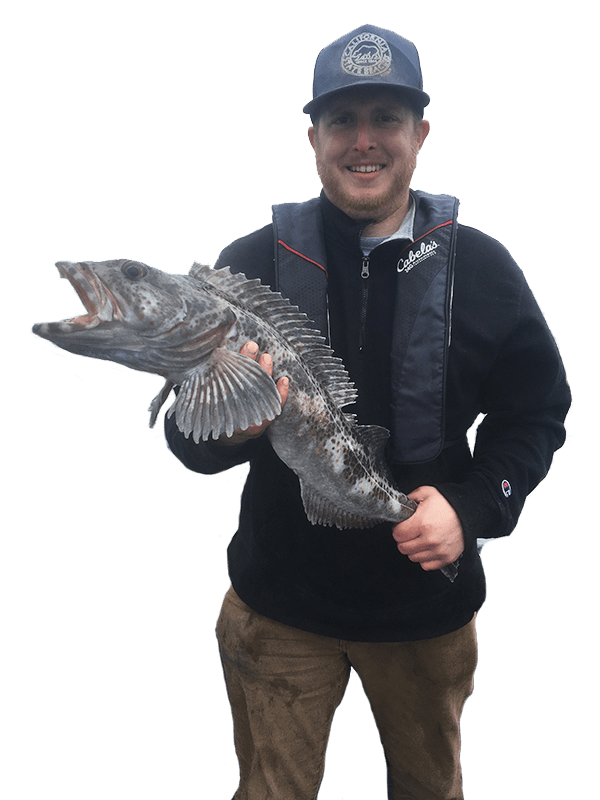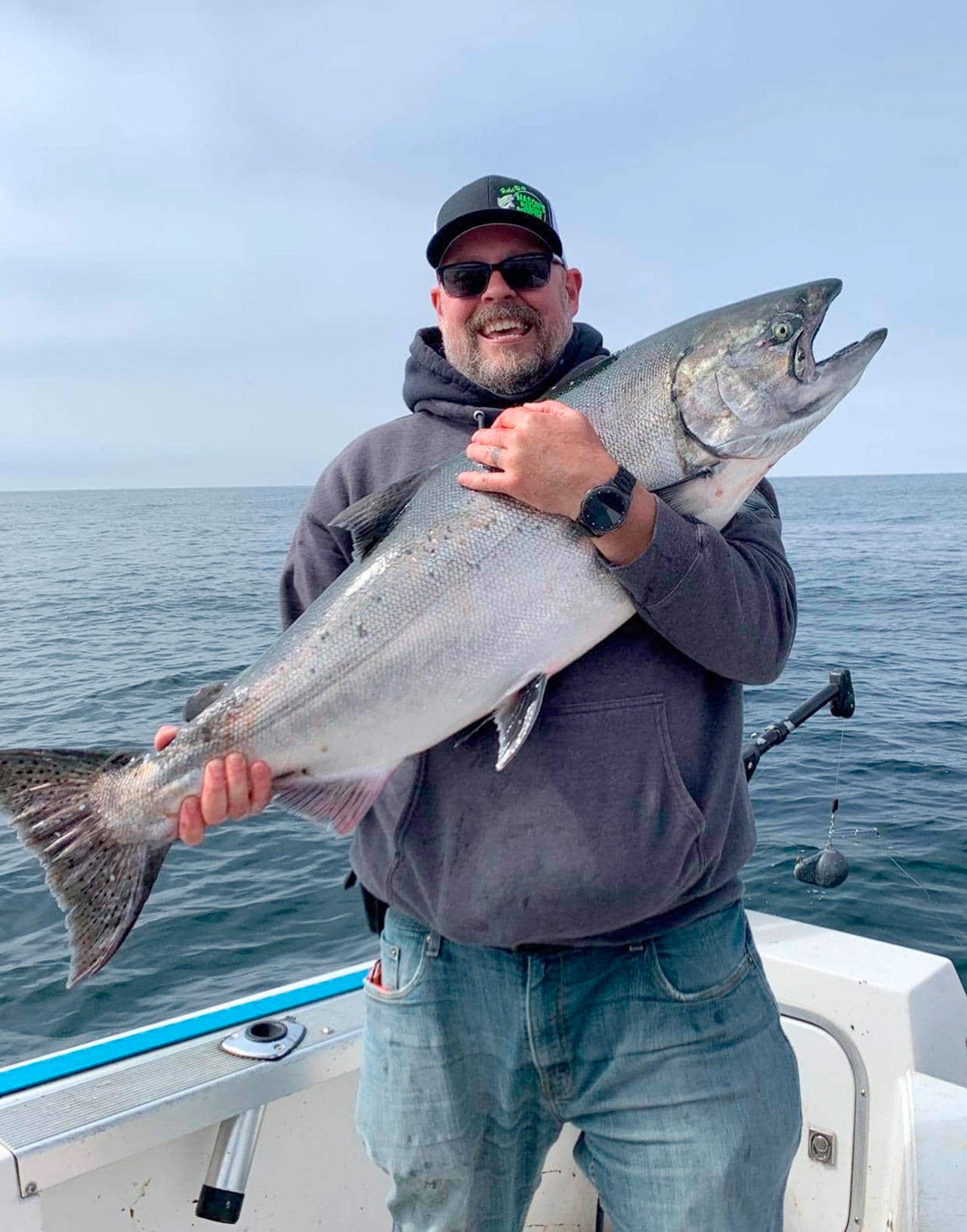The Differences in Coho and King Salmon
There are so many different kinds of salmon, with the coho and king salmon being two of the more popular ones around Oregon. These are two very popular game fish we love to bring home because of their delicious meat. Furthermore, they are both anadromous fish coming from the salmon family.
They are similar fish, so what are the differences between coho and king salmon anyway? Read on as we talk about their differences and how you can tell these to fish apart next time you’re on a fishing trip!
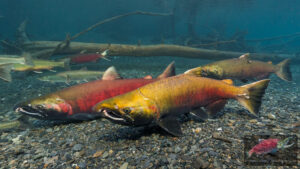
What is Coho Salmon?
Coho salmon, also called silver salmon or silvers, are part of the pacific salmon family, known for their black tongues and white gums. Its scientific name is Oncorhynchus kisutch. These fish can take on a silver to red or wine color, depending on their gender and age. Overall, they have dark blue-green heads and backs.
Most coho salmon you’ll catch would weigh between 5-15 pounds, measuring between 17-24 inches long. Larger fish of this species can weigh over 30 pounds and reach up to 38 inches long.
In terms of flavor, silvers have a mild and firm flavor with a moderate to high-fat content. You can prepare silvers through baking, broiling, grilling, and smoking.
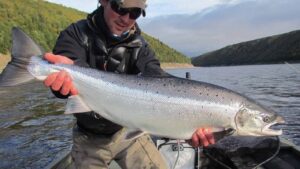
What is King Salmon?
On the other hand, we call king salmon a variety of names, such as the chinook, quinnat, spring salmon, tyee salmon, blackmouth, chum salmon, hookbill salmon, and black salmon. Its scientific name is Oncorhynchus tshawytscha and is Alaska’s state fish!
This type of salmon dons both black mouth and gums and measure up to 33-36 inches, with some king salmon reaching 58 inches. As the name suggests, the king salmon is the biggest salmon type, weighing between 10-50 pounds. Some king salmon can reach up to 130 pounds.
Similar to coho salmon, king salmon would change colors in different waters. When in freshwater, they have the similar silver sides the coho does. But once they head to the ocean, they have golden sides.
In terms of flavor, king salmon has the highest oil content, giving off a rich flavor and softer flesh. It also contains a high amount of omega-3 fatty acids, which are good for our health! With its delicious flavor, you would usually prepare this salmon through baking, broiling, grilling, poaching, or sautéing.
The Differences in Coho and King Salmon
Now that you’re more familiar with what the coho and king salmon are, what makes them different? Here are the major points to consider:
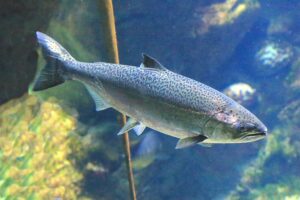
Color and Texture
As you read, king salmon is far larger and heavier than coho, being the biggest salmon species. Besides distinguishing these fish by size, you can tell them apart from their color and texture.
Coho salmon would have bright red sides, bluish-green head, and back, along with a dark belly. As for the king salmon, they have silvery sides, a blueish green, red, or purple head and back, along with dark spots across their upper body and tail. Furthermore, coho salmon would have white gums, compared to the black gums of king salmon.
When you cut into the flesh, coho salmon would have a lighter color than king salmon. In terms of texture when eaten, king salmon would have a “melt in the mouth” effect thanks to the high-fat content. When filleting king salmon and cooking it medium-rare, people would compare the fish center as custard.
Coho salmon is leaner but still firm, even when cooked. It would also have medium flakes like king salmon.
Where to Find Coho and King Salmon
You can easily find these two salmon species in the North Pacific Ocean. However, you can fish for coho salmon in other areas like North America (Canada) and Asia, particularly in Japan. The highest number of harvested coho are from Russia and the USA, with Alaskan troll fisheries referring to coho as their backbone.
As for the King salmon, you can also find it in North America, Asia, and even New Zealand. It’s considered a precious fish worldwide and is harvested at high rates annually. New Zealand is the world’s largest supplier and producer of this fish.
You can even find certain communities celebrating the first king salmon catch of the year, considering the species culturally important. Many tribes feature this salmon as the “First Salmon Ceremonies!”
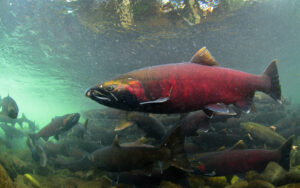
Coho and King Salmon Nutrition
As you probably guessed, king salmon has a higher calorie and fat content than coho salmon, but with similar protein content.
However, they have similar levels of omega-3 fatty acids and other notable vitamins and minerals like vitamin B6, B5, potassium, magnesium, phosphorous, calcium, selenium, and the like. King salmon contains more vitamin B12 and folate but less selenium and potassium than coho salmon.
If you’re wondering which is healthier, we see that coho salmon is better here, as it has less fat and fewer unhealthy saturated fats. It still contains a similar amount of omega-3 fatty acids but fewer calories and cholesterol compared to King salmon. That said, we still believe both fish species are healthy, with the king salmon having various helpful nutrients!
Wrapping It Up
While the coho and king salmon have their similarities, they are definitely not one and the same fish. There’s no better type as it will depend on what specific salmon you want to catch and the type of meat you want to take home! If you want more fatty fish with a big taste, then the bigger king salmon is your best bet, while others may appreciate the lighter taste and less fat content of the smaller coho.
Hopefully, you learned more about the differences between coho and king salmon from our article! Continue learning more about fishing around Oregon and the other fish species you can target in the area. And hey, if you’re already planning to go on a fishing trip in the state, consider contacting us for fishing charter services and see what we have to offer to make your adventure a fun one.
Schedule your Oregon Fishing Charter Today!
